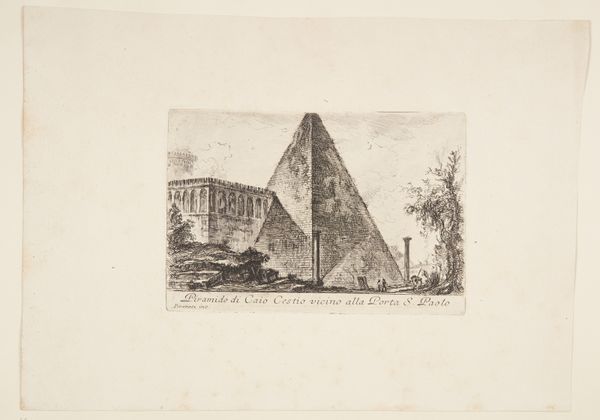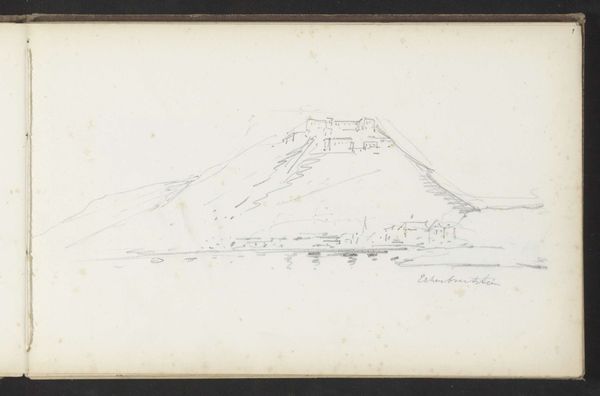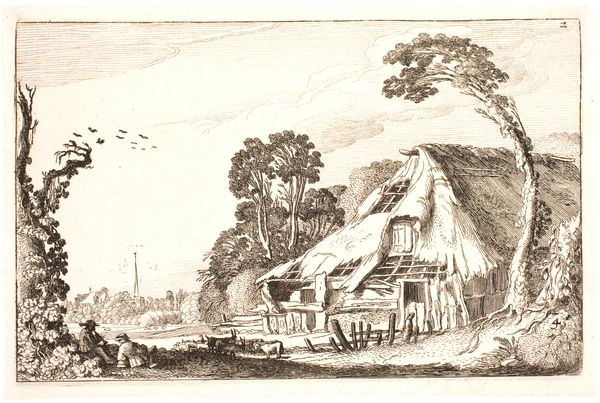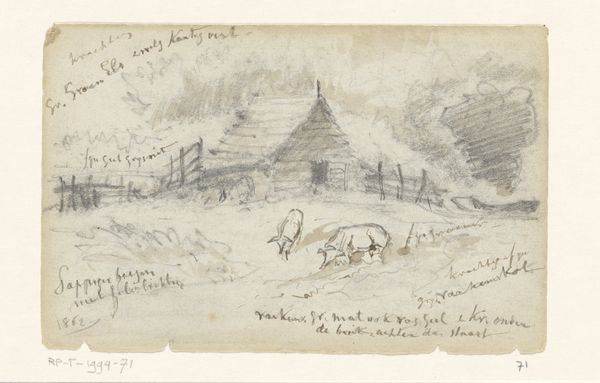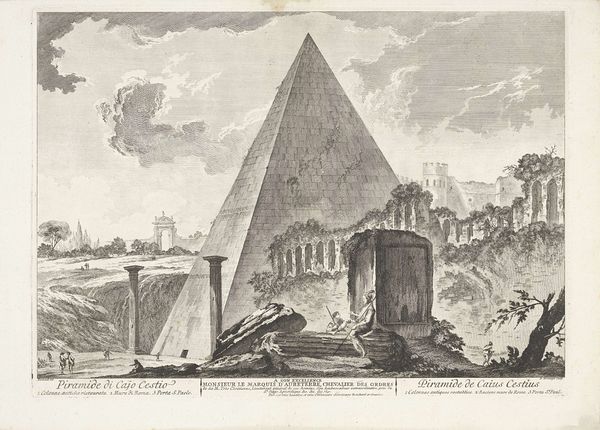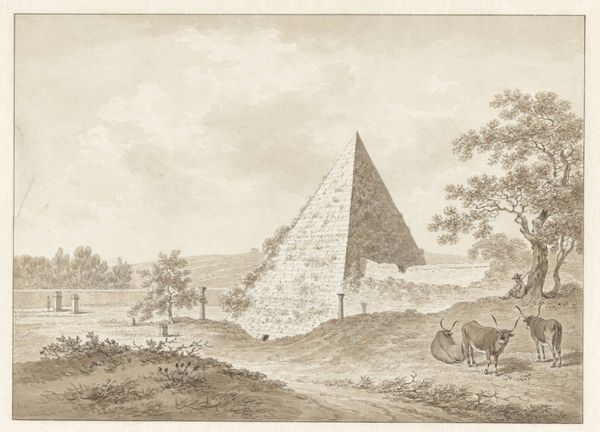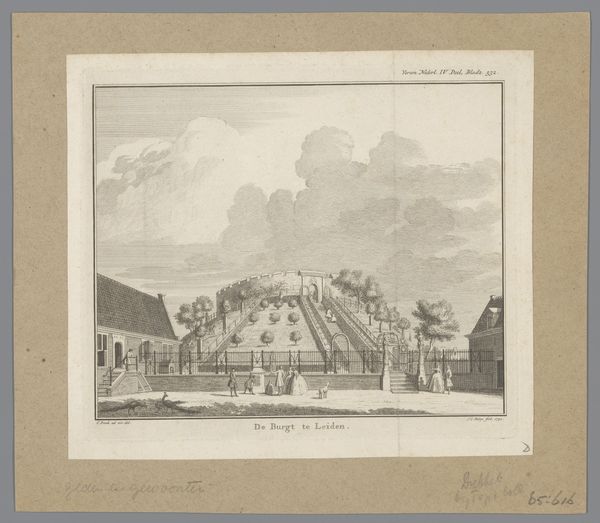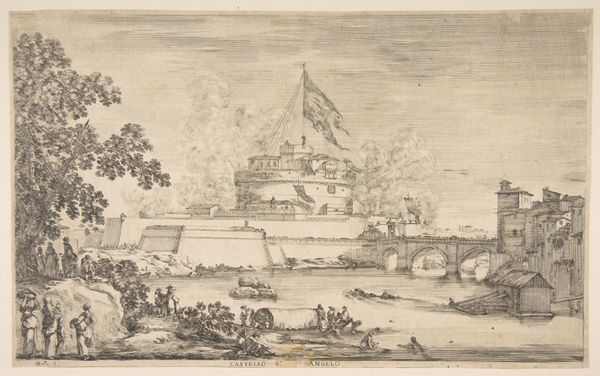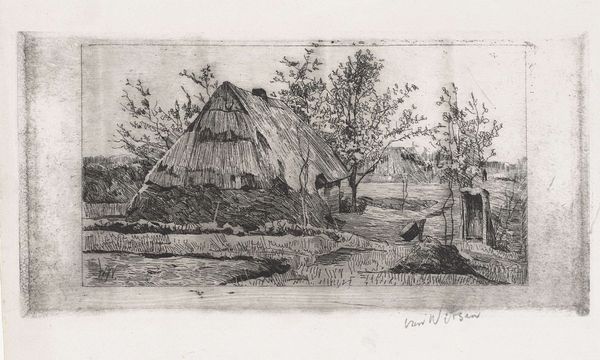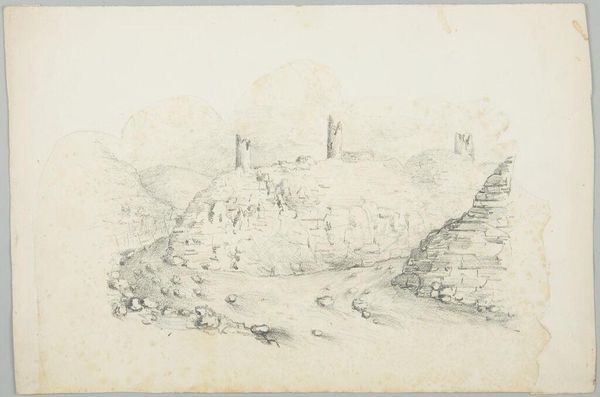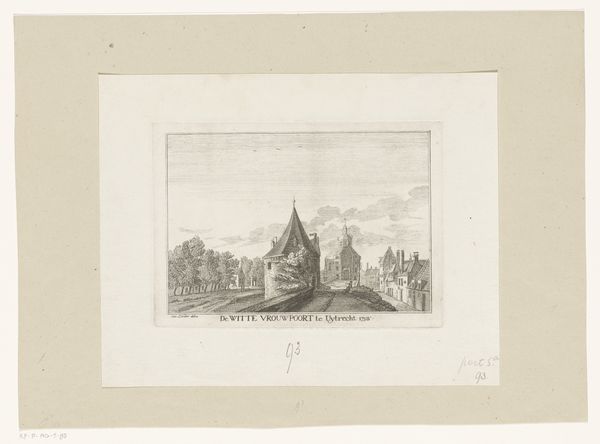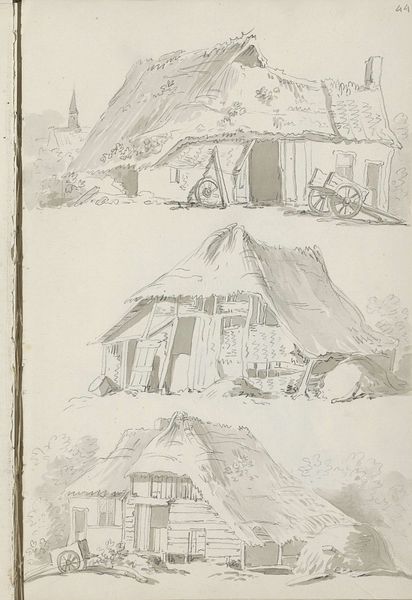
drawing
#
drawing
#
landscape
#
geometric
#
history-painting
Dimensions: 3 5/8 x 6 1/16 in. (9.2 x 15.4 cm)
Copyright: Public Domain
Editor: So, this is "Study of a Pyramid" by Jacques Louis David, made sometime between 1760 and 1825. It's a drawing, and the overall feeling I get is one of...ambition, but also a little strange with those almost classical buildings seemingly glued on. What do you see in this piece? Curator: What immediately strikes me is the way David appropriates ancient Egyptian motifs within a context of burgeoning European Neoclassicism. It begs the question: What function did these historical references serve? Was it simply aesthetic, or did it speak to the era's political aspirations? Editor: Political? How so? Curator: Consider the era. The French Revolution was looming or had just happened, depending on the date of this drawing. Pyramids, evoking permanence and power, were potent symbols. Did David intend to comment on revolutionary ideals, perhaps hinting at both their ambition and potential for tyranny, or vice versa by contrasting it to Greek temples, representing liberty? Also, consider that this isn’t an exact replica. Do you notice how David alters the pyramid by integrating classical structures, almost domesticating the exotic, thus imposing European aesthetic values? Editor: I see what you mean. The blending seems like a claim, visually placing European culture in dialogue with—or even in control of—Egyptian grandeur. It’s about museums too: which art gets displayed and who interprets it. Curator: Precisely. It prompts us to reflect on the Western gaze and its impact on shaping the narrative around ancient civilizations. Who controls history controls the present, right? Editor: That’s really made me rethink the drawing. I came in just thinking ‘pyramid’, now it seems about cultural power. Thanks! Curator: Indeed, thinking about context can radically change how we see, and understand a work of art. Thanks for the fresh perspective!
Comments
No comments
Be the first to comment and join the conversation on the ultimate creative platform.
